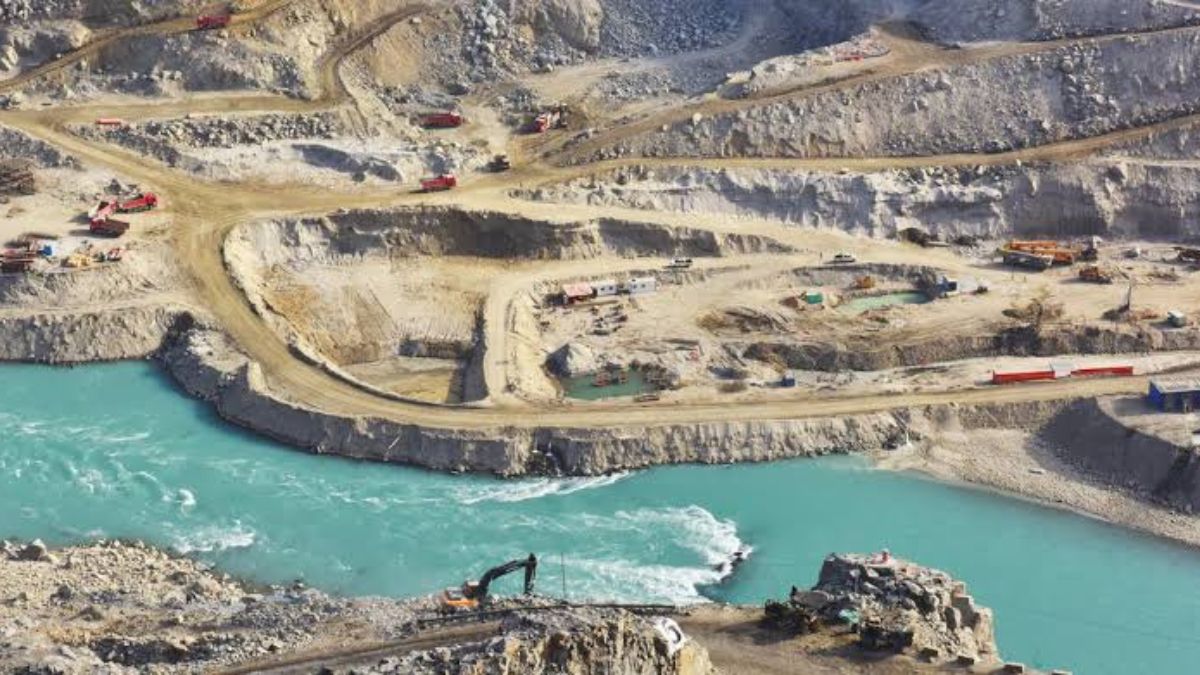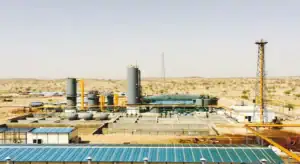The Diamer-Bhasha Dam Project is one of Pakistan’s most significant infrastructure undertakings, designed to enhance water storage, power generation, and flood control. Located on the Indus River, the dam addresses the country’s growing energy and agricultural water demands.
Project Overview
| Category | Details |
|---|---|
| Project Name | Diamer-Bhasha Dam |
| Location | Gilgit-Baltistan & Khyber Pakhtunkhwa |
| River | Indus River |
| Dam Type | Roller-Compacted Concrete (RCC) |
| Height | 272 meters (World’s tallest RCC dam) |
| Reservoir Capacity | 8.1 Million Acre-Feet (MAF) |
| Live Water Storage | 6.4 MAF |
| Hydropower Generation | 4,500 Megawatts (MW) |
| Annual Energy Output | 18.1 Billion Kilowatt Hours (kWh) |
| Number of Turbines | 12 (Each 375 MW) |
| Construction Start | July 2020 (Official Groundbreaking) |
| Expected Completion | 2028–2029 |
| Estimated Cost | USD 14 Billion+ |
Read More: Chakwal Spinning Mills Rebrands as Infini Data Technologies: A New Digital Chapter Begins
Location Details
The dam is being constructed near the town of Bhasha in the Diamer District of Gilgit-Baltistan and partly in Khyber Pakhtunkhwa, approximately 40 km downstream of Chilas. It lies on the crucial transit route of the China-Pakistan Economic Corridor (CPEC).
Key Objectives
- Hydropower Generation: To produce 4,500 MW of clean, renewable energy.
- Water Storage: To secure 6.4 MAF of water for irrigation and agriculture.
- Flood Management: To reduce downstream flood risks.
- Silt Management: To extend the lifespan of the Tarbela Dam by reducing sedimentation.
- Job Creation: To provide over 16,000 jobs during peak construction.
Economic and Strategic Significance
| Benefit Area | Details |
|---|---|
| Energy Security | Reduces power shortages with sustainable energy |
| Agricultural Boost | Secures irrigation water for millions of acres |
| Infrastructure Growth | Enhances roads, connectivity, and northern development |
| National GDP Impact | Expected to uplift economy and reduce energy imports |
| Climate Resilience | Supports clean energy and climate goals |
Funding and Construction Partners
- Executing Authority: Water and Power Development Authority (WAPDA)
- Design & Feasibility: NESPAK and international consultants
- Construction Contractor: Power China – Frontier Works Organization (FWO) JV
- Financing: Government of Pakistan, WAPDA, local banks (limited foreign funding)
- International Hesitation: World Bank & ADB abstained due to Gilgit-Baltistan’s disputed status
Resettlement and Environmental Impact
| Aspect | Details |
|---|---|
| Affected Population | Over 30,000 people |
| Resettlement Plans | Construction of model villages, schools, and healthcare |
| Cultural Heritage | Risk to Buddhist rock carvings; relocation initiatives |
| Environmental Concerns | Loss of biodiversity, need for environmental safeguards |
Challenges and Controversies
- Geopolitical Sensitivities: Located in a disputed region (Kashmir), limiting international support.
- Funding Difficulties: Lack of World Bank/ADB funding due to political concerns.
- Resettlement Delays: Community opposition and slow compensation processes.
- Environmental Risks: Ecological damage and loss of archaeological sites.
Read More: China Offers Pakistan J-35 Stealth Jets, HQ-19 Defense System
Current Status (As of 2025)
| Development Area | Progress |
|---|---|
| Land Acquisition | Over 90% completed |
| Civil Works | Tunnels, spillways under construction |
| Workforce Deployment | More than 10,000 workers engaged |
| Resettlement Sites | Model village development ongoing |
| Completion Forecast | On track for 2028–2029 |
Conclusion
The Diamer-Bhasha Dam is a transformative national project that promises to address Pakistan’s chronic water and energy crises. Once operational, it will deliver renewable energy, secure water for agriculture, and mitigate flood risks — making it a cornerstone of Pakistan’s sustainable future. Despite geopolitical and environmental hurdles, steady progress continues, reaffirming its status as a project of unparalleled national importance.Stay updated with: Bloom Pakistan
References
- WAPDA Official Website – www.wapda.gov.pk
- Pakistan Ministry of Water Resources Reports
- News Coverage: Dawn, The Express Tribune, The Nation
- Engineering & Hydropower Reports (NESPAK, FWO)
Read More: Japanese Moon Lander Resilience Crashes on Lunar Surface









